Sorting helps children develop executive function skills, important brain skills that help with memory, attention and problem-solving. Research shows that the stronger these skills are when a child begins kindergarten, the more likely they are to perform better at school. Executive function skills do not develop on their own, children need to participate in activities that promote these skills. Sorting activities require a child to understand a rule such as “Can you sort these shapes by colour?” and to maintain this rule in their mind (which builds their memory). Both of these contribute to stronger executive function skills.
Over a series of lessons students thought of a variety of ways we could sort items such as toy vehicles, rocks and toy animals.
All the classes needed to talk about what sorting was as they initially came up with lots of ideas of how to play with the cars. When they understood sorting meant putting the cars in specific groups the first idea that came from all the students was to sort the cars by colour, which they could all do successfully. When a vehicle was more than one colour it encouraged good discussions around what group the vehicle should be in.
It took a few hints for them to also think of sorting the vehicles by the type they were so cars, buses, boats, trucks and that seemed to spark ideas about sorting the vehicles by their size. This led to discussing length and height.
The truck is longer than the car.
The black ones are shiny.
Shape
Some of the juniors also thought of sorting the rocks by shape. They could see that some were sort of like triangles, some like rectangles, some were mostly round and one was kind of a square shape. One of the students talked about how the rocks were round on the edges. We discussed how they get worn smooth by water as most had been found by rivers. We compared them to the black ones which had sharp edges.
The square rock has sharp edges.
Size
The students made a long line of rocks from the biggest to the smallest. They then decided which ones we would call big, which ones were medium and which were small.
We have 9 large and 9 medium
Texture
This was a tricky concept and I gave ‘clues’ by holding up a smooth rock and rubbing it, then holding up a rock with rough edges. A student in each room would call out smooth and then we could discuss what texture meant and decide which were rough and which were smooth.
I like the smooth ones.
I also had the opportunity to work with some students on how to design a zoo with toy animals. It was encouraging to hear the discussion and ideas of what animals should be in the zoo and which ones shouldn’t. The children put the ‘wild’ animals in the zoo and made another zoo for farm animals. They also used a blue carpet tile as the ‘water’ area to put animals that lived in water or liked being in the water some of the time. The increased complexity and sophistication of ideas was easy to see after the lessons in classification.
We have to have imaginary cages so the different animals are separated from each other.
Keywords
classifying, sorting, texture, executive function

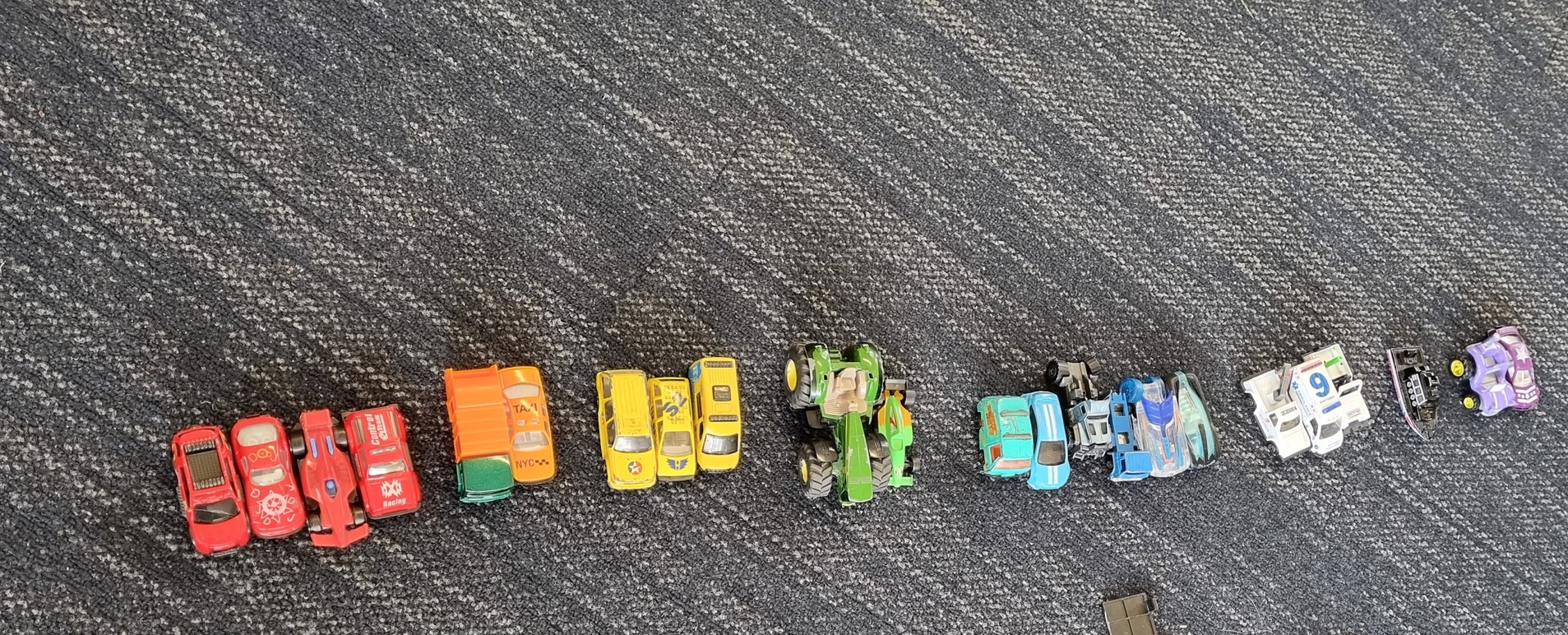
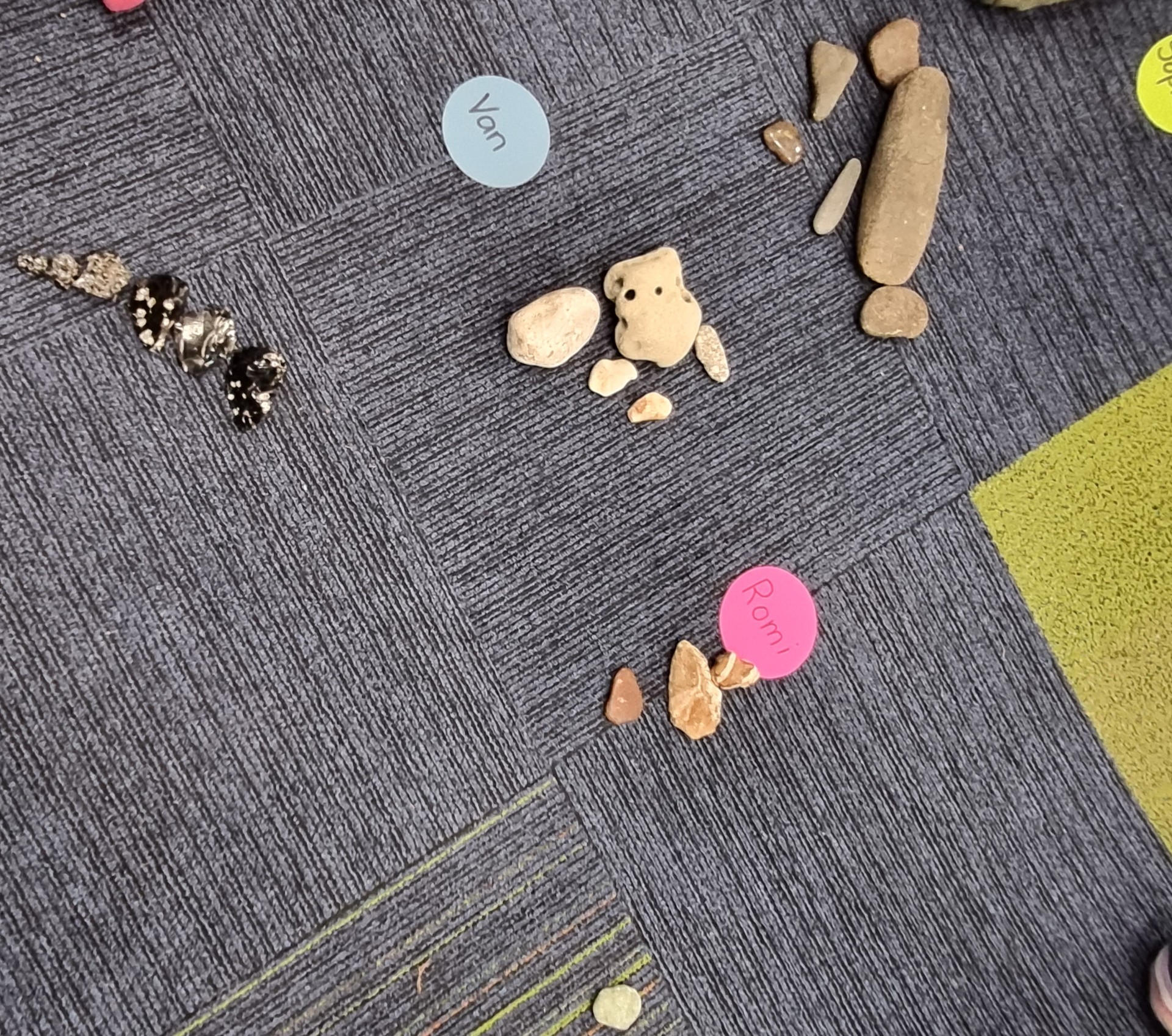
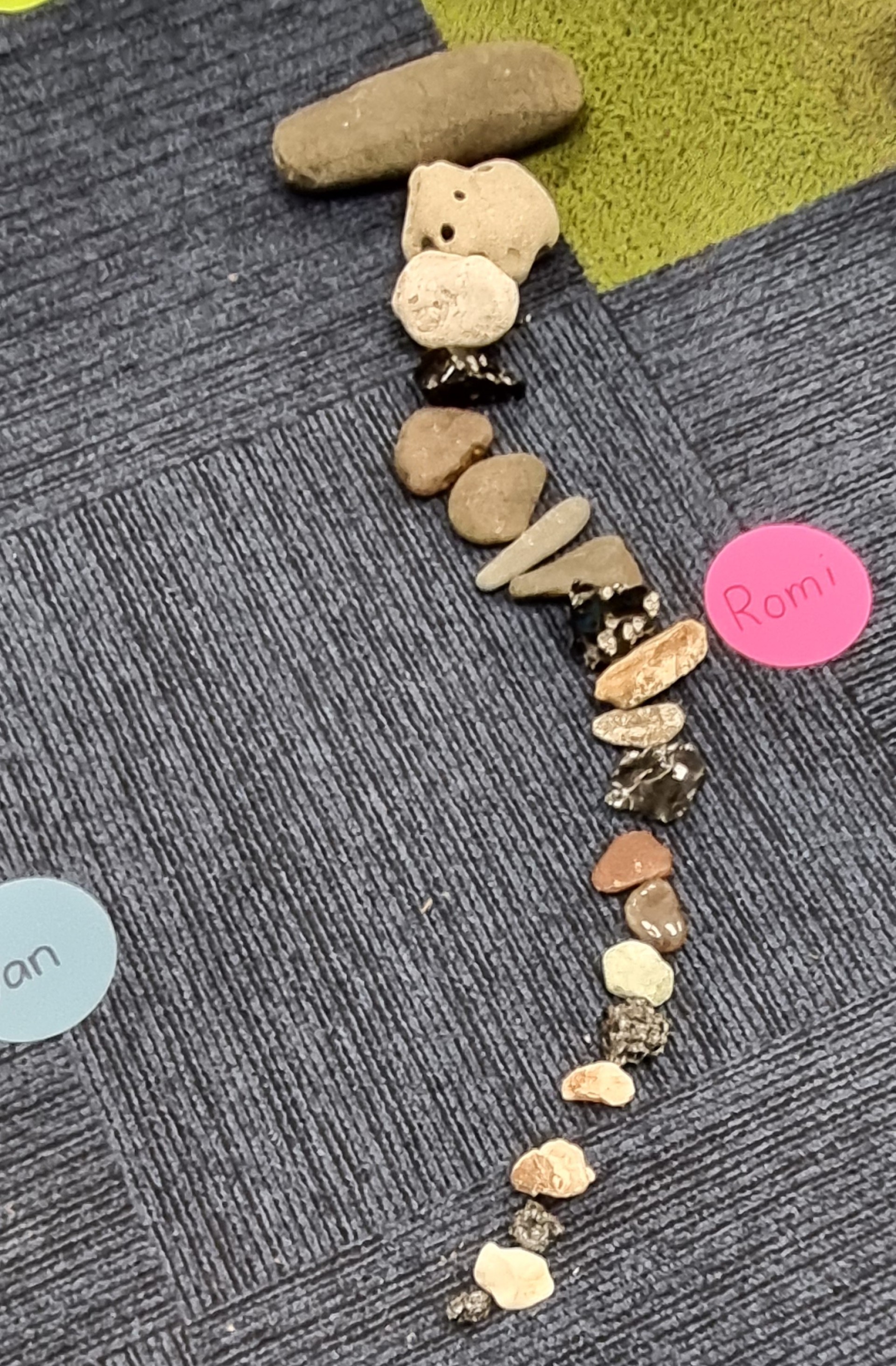
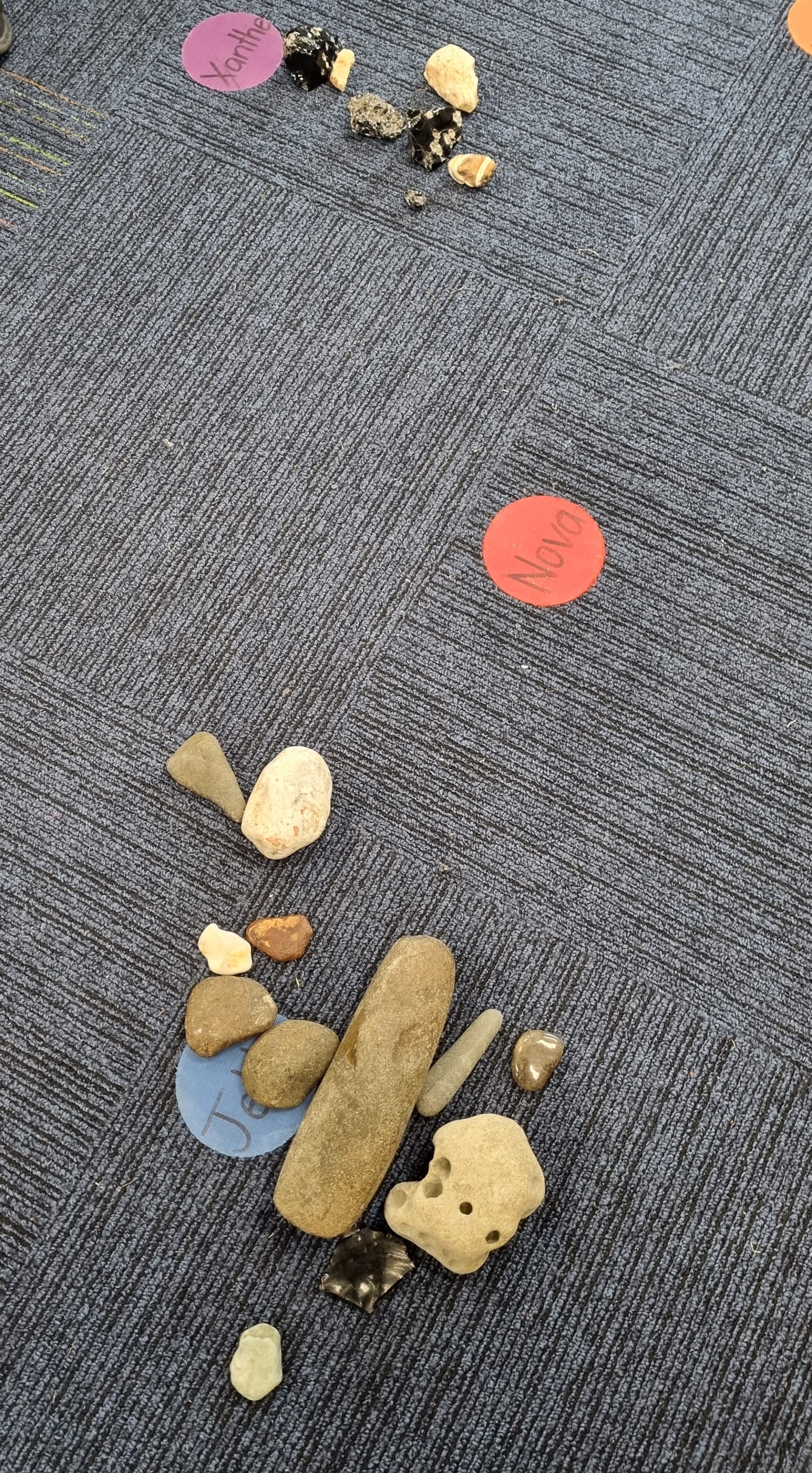
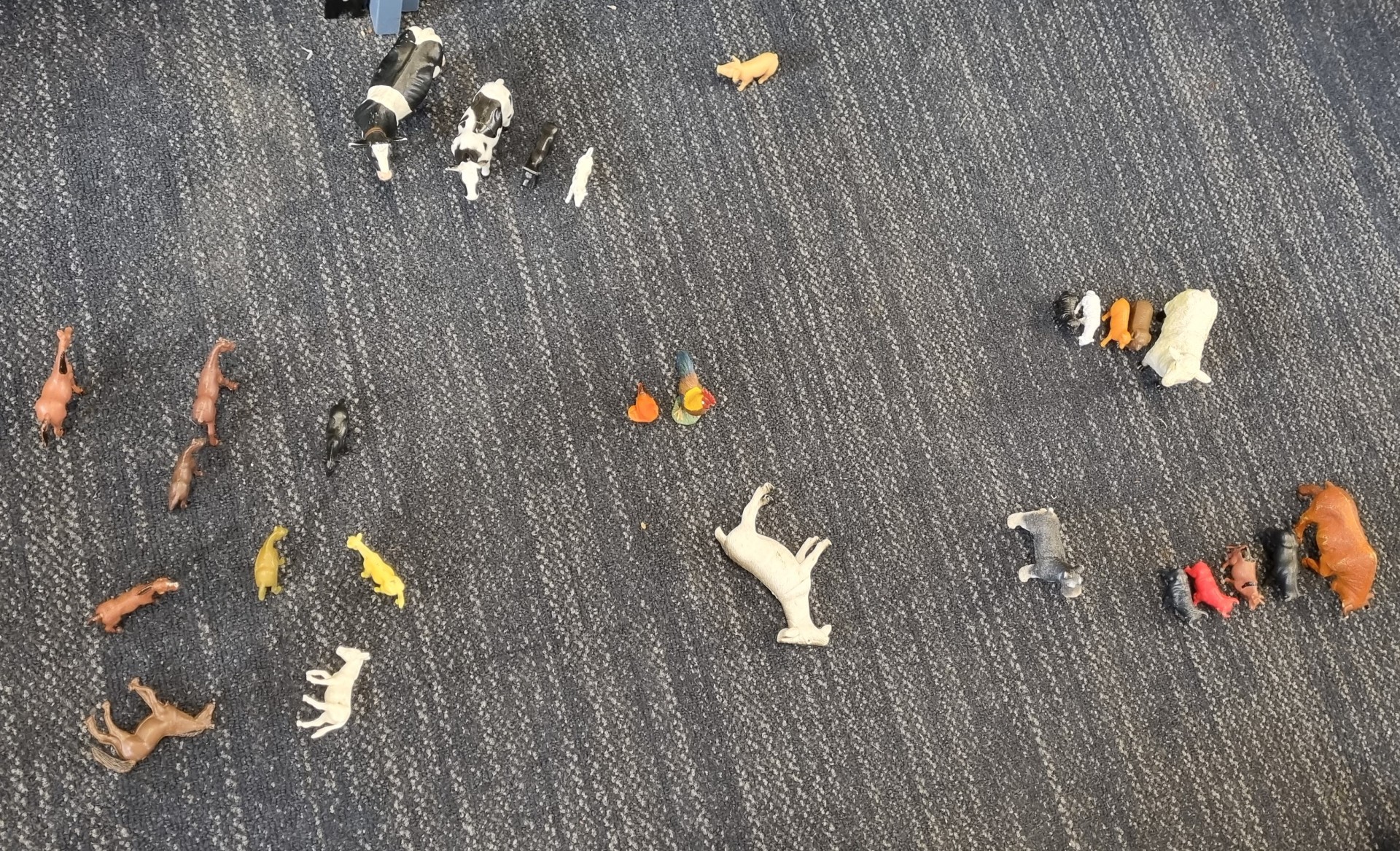

Comments are disabled for this post.